Vibrational Fascia Release Technique(TM)
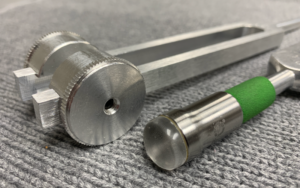 VFRT uses the 128hz weighted tuning fork together with distinct core skills of palpation, grip, strike, placement, and pressure against the skin for rapid relief of pain and restoration of mobility throughout the body.
VFRT uses the 128hz weighted tuning fork together with distinct core skills of palpation, grip, strike, placement, and pressure against the skin for rapid relief of pain and restoration of mobility throughout the body.
At NEHC Academy, we have established specific protocol groups designed to encompass patterns of conditions based primarily on medical diagnosis, location in the body, and unique aspects of a condition specific to the type of tissue and restrictions involved. Each protocol group includes a step-by-step starting process, healer logic, and application of core skills to relieve most conditions within a single session. Some protocol groups may only include using healer logic and knowledge gained within the other protocol groups to work directly on the area of pain and restriction.
A Focus on Fascia and Fluids
VFRT focuses mainly on the soft “connective” tissue of the body where pain and restriction is a result of collagen fascia fibers and pressurized fluids working together to press against pain receptors, pinch or compress nerve bundles, reduce blood flow, and prevent the lymphatic system from removing fluids from these enclosed “interstitial” spaces. We use a combination of vibration and compression from the tuning fork to directly affect the collagen fascia fibers and compressed fluids where the restriction either “releases” or “resolves” completely to return a restricted area back to normal function.
10 Critical Core Skills
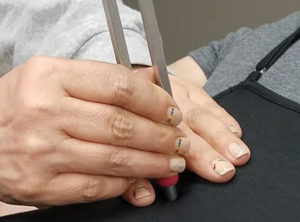 With VFRT, we use our hands to feel or palpate the skin to identify exact locations to place the tuning fork with each strike, and we continue to monitor the status of each placement with our feedback hand. The combination of vibration and compression of the fascia provides immediate changes which can be felt by both the therapist and client. Through training and experience, our VFRT Therapists use their 10 Core Skills and established methods and protocols to bring about immediate changes sometimes not possible with typical hand-based bodywork and manual manipulation. Recent Fascia Research studies have determined the need for both stretching and vibrating the cells of the body to cause a change to the current operating condition. Tuning forks provide both properties of change, and VFRT combines skill and knowledge for a new way of thinking when it comes to healing the body through fascia and fluids.
With VFRT, we use our hands to feel or palpate the skin to identify exact locations to place the tuning fork with each strike, and we continue to monitor the status of each placement with our feedback hand. The combination of vibration and compression of the fascia provides immediate changes which can be felt by both the therapist and client. Through training and experience, our VFRT Therapists use their 10 Core Skills and established methods and protocols to bring about immediate changes sometimes not possible with typical hand-based bodywork and manual manipulation. Recent Fascia Research studies have determined the need for both stretching and vibrating the cells of the body to cause a change to the current operating condition. Tuning forks provide both properties of change, and VFRT combines skill and knowledge for a new way of thinking when it comes to healing the body through fascia and fluids.
What is not a part of VFRT?
Since we use a form of vibration to affect fascia and fluids, VFRT bridges a gap across multiple healing modalities. The sound healing community uses various weighted and un-weighted tuning forks either in the air or pressed against the body for a specific healing purpose. Sound healer methods range from only sounds emitted into the air by vibrating instruments to a combination of unweighted tuning forks and techniques used off the body in the energy field. Energy healers use a hands-on or hands-off method to work with electro-magnetic energy through various methods to heal the body with the energy system of meridians and chakras. Some sound and energy healing modalities focus on healing a person’s emotions which is thought to be connected to a physical ailment.
Bodyworkers focus on using hands and various devices to change the structure of fascia in multiple layers from the superficial layer down to deep fascia surrounding the muscle layers. Bodyworkers learn about musculo-skeletal systems and use specific methods to increase range of motion across joints and within muscle groups. Most chiropractors focus on moving the bones back into alignment using established protocols and methods.
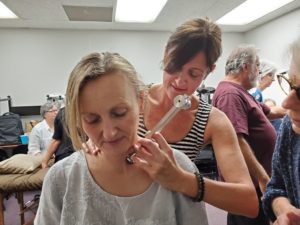
In VFRT, we primarily focus on the superficial fascia layer just underneath the skin. This area is sometimes referenced as the “dermis” layer between the outer epidermis and the musculo-skeletal layer. It is within this superficial layer where we find the greatest restrictions and pressurization of the interstitial plasma fluids coming from the cardiovascular system. Although some fluid pressure and fascial restrictions can reside within the muscle groups, we have found success with most resolved conditions within the outer superficial layer. Through our method of moving interstitial fluids out of a pressurized space with hands or tuning forks, these fluids move across known muscle groups indicating a more global location in the superficial fascia layer stretching across the entire body.
We only use the weighted tuning fork for the purpose of providing physical vibration to the cells and tissue of the body. VFRT focuses on the physical vibration aspect instead of on the energy and emotion approach to healing. Tuning fork vibration is a form of mechanical energy which follows the laws of physics separate from the laws of other types of energy such as electro-magnetic or electrical (electron) flow. We work on areas of the body where we feel for specific tissue properties underneath the skin. Our therapists can identify patterns in tissue density to recognize normal fascia without pressurized fluid pockets. VFRT Therapists are trained to identify placement locations established through known patterns or identified through palpation. We do not work on the body’s energy system or on established meridians and acu-points.
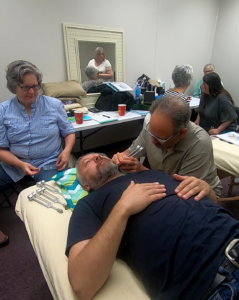 We do not work directly on the bones as an established standard for VFRT. The weighted 128hz tuning fork has been named the OTTO 128 by practitioners and tuning fork suppliers throughout the sound healing community. The term OTTO stands for “Osteophonic” meaning to focus on the vibration within the bone structure. The underlying concept of osteophonics is due to the physics of vibration travel specific to the dense nature of a bone. However, physics of sound also states the dynamics of vibration will remain inside of the bone since the soft tissue outside the bone differs greatly in density. Since VFRT focuses on the soft tissue, we place our tuning fork directly on the fascia layer so the vibration does not get trapped within the density of the bone structure.
We do not work directly on the bones as an established standard for VFRT. The weighted 128hz tuning fork has been named the OTTO 128 by practitioners and tuning fork suppliers throughout the sound healing community. The term OTTO stands for “Osteophonic” meaning to focus on the vibration within the bone structure. The underlying concept of osteophonics is due to the physics of vibration travel specific to the dense nature of a bone. However, physics of sound also states the dynamics of vibration will remain inside of the bone since the soft tissue outside the bone differs greatly in density. Since VFRT focuses on the soft tissue, we place our tuning fork directly on the fascia layer so the vibration does not get trapped within the density of the bone structure.
Our VFRT methods are very specific to physical ailments, so we do not focus on conditions based on mental health diagnoses and stress-related disorders. However, certain protocols and methods might have an affect on the overall health and condition of a client where the resolution of a physical ailment can aid in resolving a mental health condition.
VFRT is performed in a traditional massage-style bed, but our clients are fully clothed and receive treatments from a sitting position or laying down (face down or up). Our sessions do not focus on relaxation as the main goal, so our clients are fully awake and participate in the feedback process as we identify and release the restrictions associated with pain and mobility.
Fascia Articles
Determining Appropriate Pressure in VFRT
Determining the right amount of pressure is a crucial skill for Vibrational Fascia Release Technique (VFRT) practitioners to develop. However, as a beginner, knowing whether
Relationship between fibroblasts and epigenetics
Epigenetics refers to changes in gene expression that do not involve alterations to the underlying DNA sequence. Epigenetic changes can be influenced by various factors,
Fibrosis as it pertains to fibroblasts
Fibrosis is a pathological process characterized by the excessive accumulation of extracellular matrix (ECM) components, particularly collagen, leading to the thickening and scarring of tissues.
What is Senescence?
Cellular senescence is a state of permanent cell cycle arrest, meaning the cell can no longer divide and proliferate. It's a complex process that can
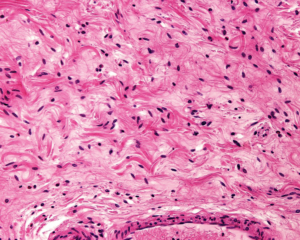
Define ECM
The extracellular matrix (ECM) is a three-dimensional network of extracellular macromolecules such as collagen, enzymes, and glycoproteins that provide structural and biochemical support to surrounding
Fluid in Tissue Fibrosis
Tissue fibrosis involves the excessive deposition of extracellular matrix (ECM) proteins, predominantly collagen, which can disrupt normal tissue architecture and function. This pathological remodeling can

